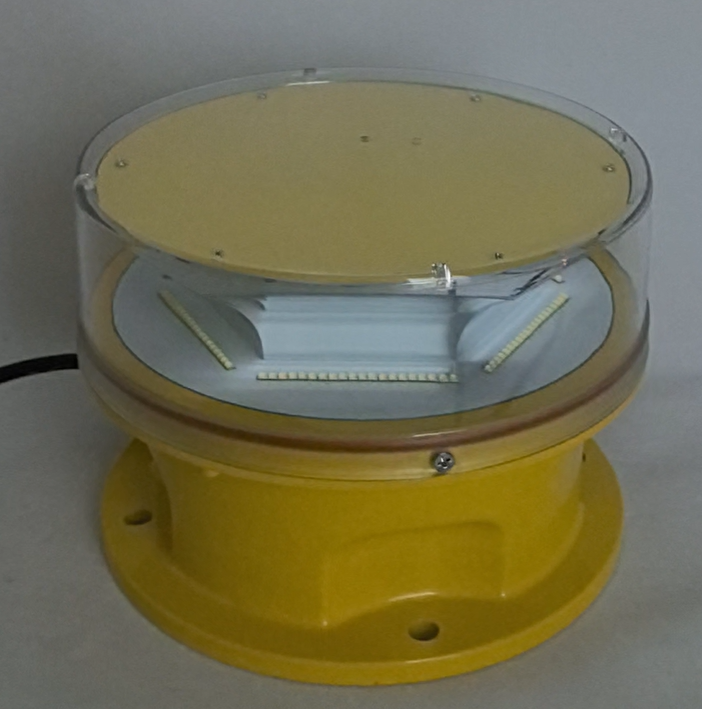In the dynamic and often congested airspace above construction sites, the towering presence of a crane represents both human ingenuity and a significant potential hazard. The primary defense against aerial collision in these zones is a specialized and non-negotiable safety device: the crane obstruction light. This article delves into the unique requirements, technological considerations, and regulatory imperatives that define effective lighting for these temporary yet critical structures, ensuring the safety of both aviation and ground personnel.
The Unique Challenge of Crane Lighting
Unlike permanent structures, cranes present a distinct set of challenges for obstruction lighting. They are temporary, mobile, and their height and position can change frequently throughout a project. This transient nature demands a lighting solution that is not only effective but also highly adaptable, reliable, and easy to deploy. The primary function of a crane obstruction light is to provide unambiguous visual warning to low-flying aircraft, particularly helicopters, which are commonly used in urban areas for news, medical, and law enforcement purposes.
Regulatory Framework: A Mandate for Safety
The installation of a crane obstruction light is seldom optional; it is typically mandated by national aviation and occupational safety authorities. Regulations, such as those from the FAA in the United States or the CAA in the UK, specify precise requirements based on the crane's height relative to its surroundings. Generally, any crane that extends more than a certain number of feet above ground level, or rises above the existing obstacle plan of an area, must be equipped with warning lights. These rules often stipulate:
Light Intensity: Specifying whether low, medium, or high-intensity lights are needed based on the crane's proximity to airports or helipads.

Number and Placement: Requiring lights at the highest point of the boom and often at the tip of the jib to clearly define the crane's profile.
Light Characteristics: Mandating specific flash sequences (e.g., flashing rather than steady) to distinguish the obstacle from other background lights.
| crane obstruction light |
Compliance is not merely a legal formality; it is a fundamental aspect of risk management and liability reduction for construction firms.
Key Considerations for Effective Crane Lighting Systems
Selecting the right crane obstruction light involves evaluating several critical factors to ensure optimal performance under demanding conditions.
1. Power Source and Autonomy:
Given that cranes are often not hardwired into a permanent power grid, autonomy is paramount. The most practical and common solution is a solar-powered crane obstruction light. These self-contained units feature integrated photovoltaic panels and rechargeable batteries, designed to operate for several days without sunlight. This eliminates the need for dangerous and expensive cabling running along the crane's boom, simplifying installation and enhancing safety.
| crane obstruction lights |
2. Durability and Environmental Resistance:
Construction sites are harsh environments. A crane obstruction light must be built to withstand vibration, extreme temperature fluctuations, rain, wind, and dust. Housing is typically constructed from high-impact, corrosion-resistant materials like polycarbonate or aluminum with a high IP (Ingress Protection) rating to ensure internal components are sealed from the elements.
3. Ease of Installation and Maintenance:
With crane heights frequently changing, lights must be easy to install, relocate, and service. Lightweight, modular designs with universal mounting brackets are essential. Maintenance features, such as easy-access battery compartments and tool-less lens covers, significantly reduce downtime and the need for technicians to spend extended time at great heights.
4. Reliability and Automatic Operation:
The system must perform flawlessly without constant human intervention. Quality lights incorporate photocells to automatically activate at dusk and deactivate at dawn, ensuring continuous compliance and conserving battery power. Reliability is the cornerstone of safety; a single light failure can create a dangerous blind spot.
The Technological Shift: LEDs and Smart Features
Modern crane obstruction light systems have evolved significantly from older incandescent models.
LED Technology: Light Emitting Diodes (LEDs) have become the industry standard. They offer massive advantages, including dramatically lower energy consumption (extending battery life), exceptional longevity, and superior resistance to shock and vibration. Their solid-state construction makes them ideal for the rigors of a construction site.
Remote Monitoring: Advanced systems now offer wireless connectivity, allowing site managers to monitor the status of every light from the ground. These systems can send alerts for low battery voltage or lamp failure, enabling proactive maintenance before a safety violation occurs.
Beyond Compliance: The Culture of Safety
While adhering to regulations is the baseline, implementing a robust crane obstruction light system reflects a deeper commitment to a culture of safety. It protects not only aircraft but also the company's reputation, financial standing, and most importantly, the lives of workers and the public. It is a visible statement that a company prioritizes its responsibilities in managing the risks associated with its operations.
The crane obstruction light is far more than a simple accessory; it is an indispensable, intelligent safety system. Its successful implementation requires careful selection based on power, durability, and reliability, all within a strict regulatory framework. As construction techniques continue to push skyward, the role of these vigilant sentinels in safeguarding our shared airspace will only grow more critical. Investing in the right lighting technology is an investment in unwavering safety and operational excellence.